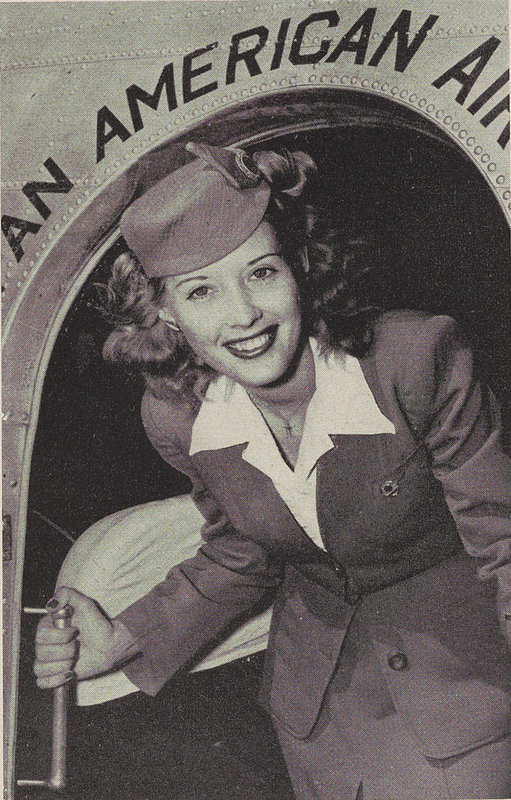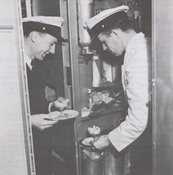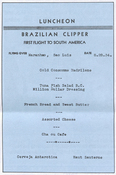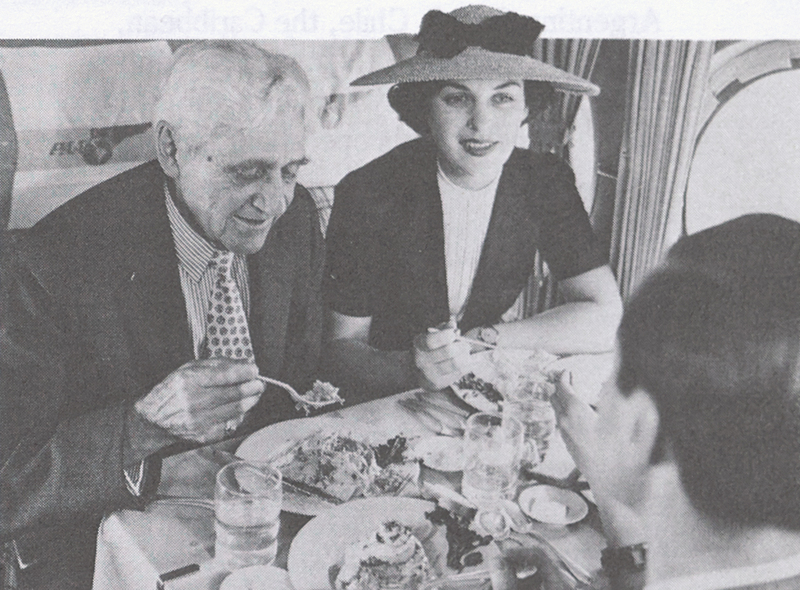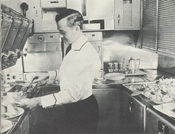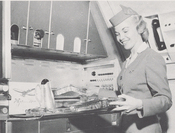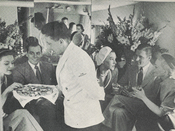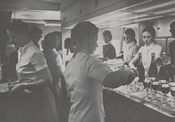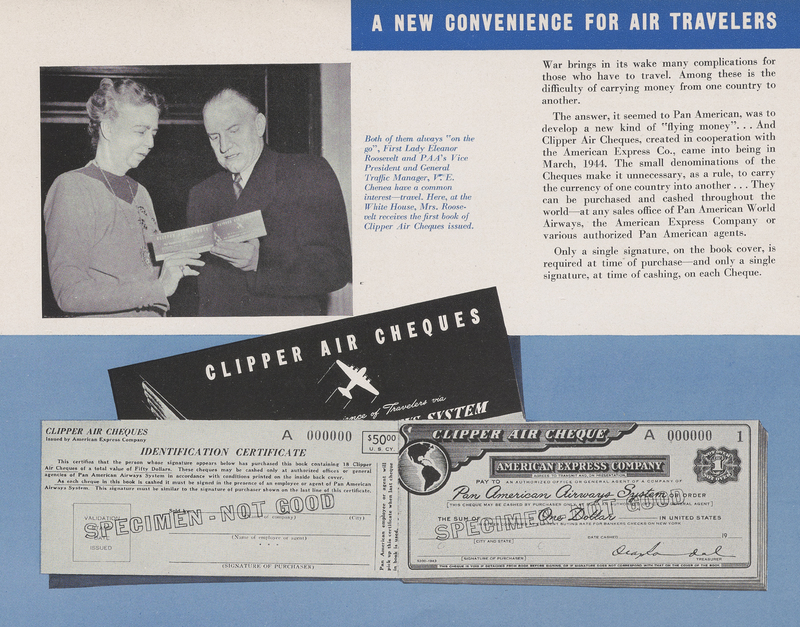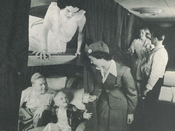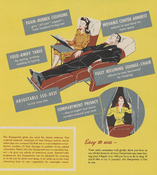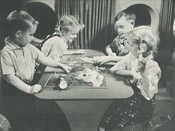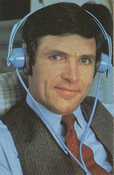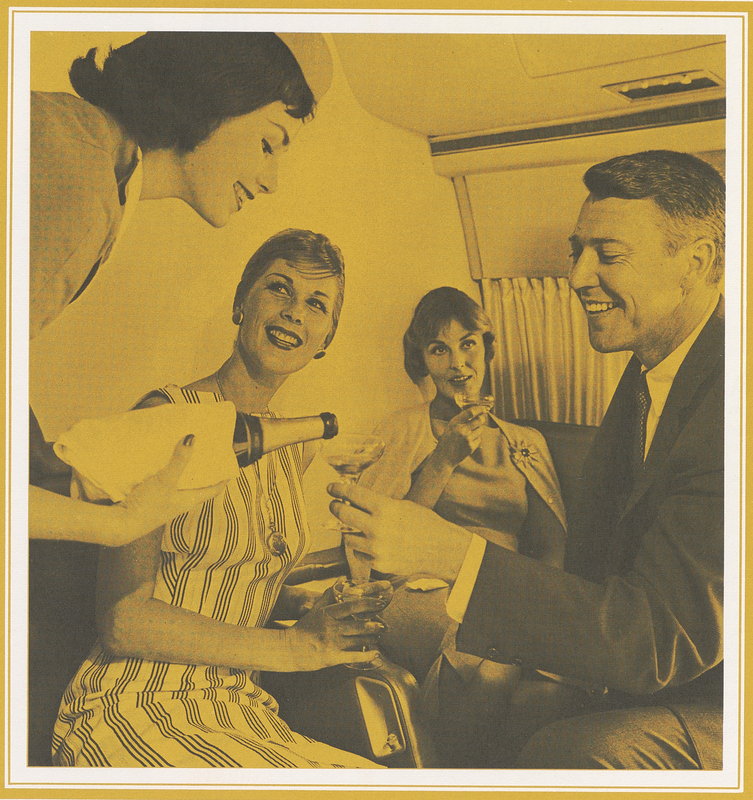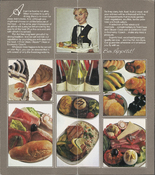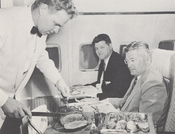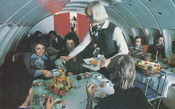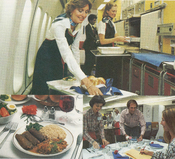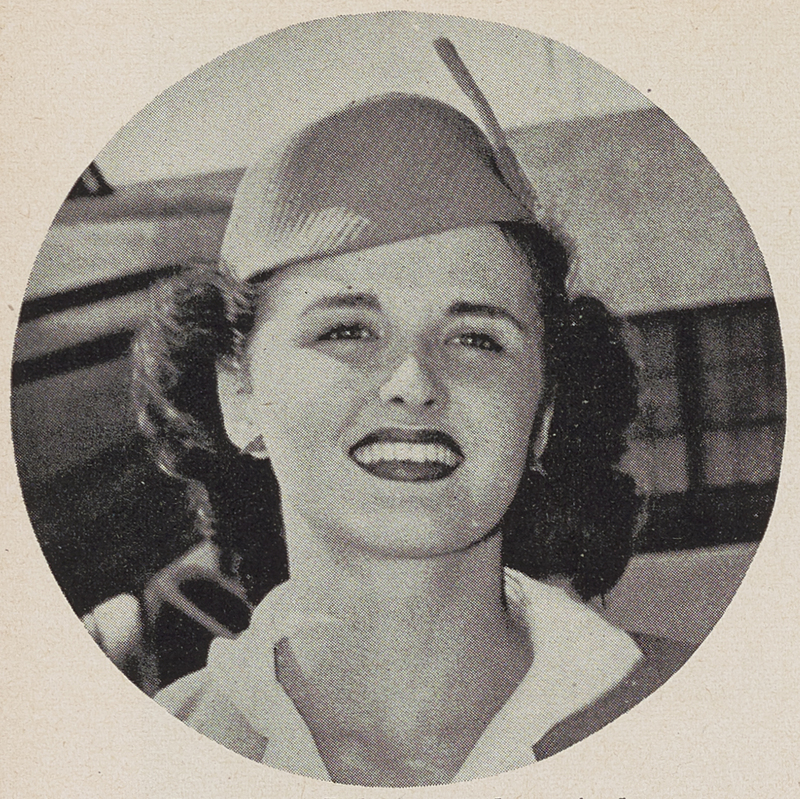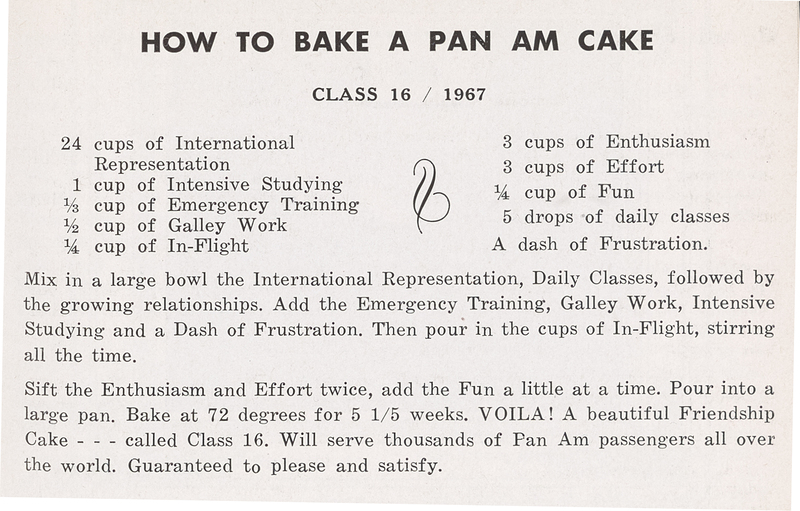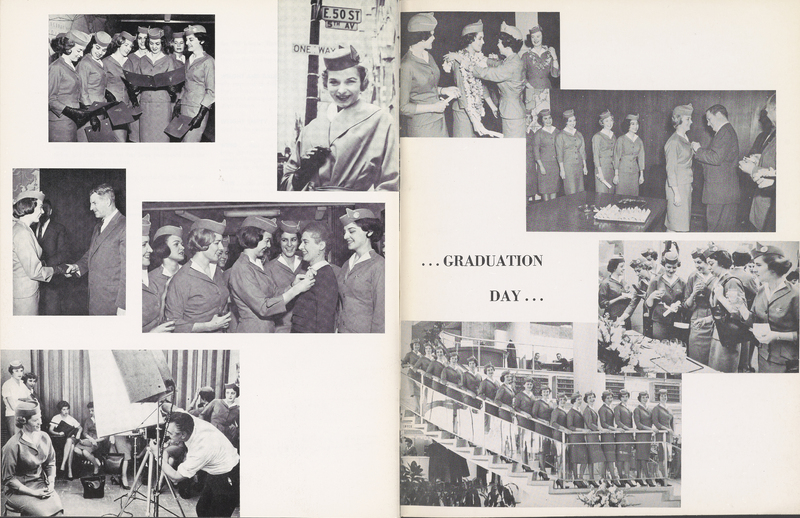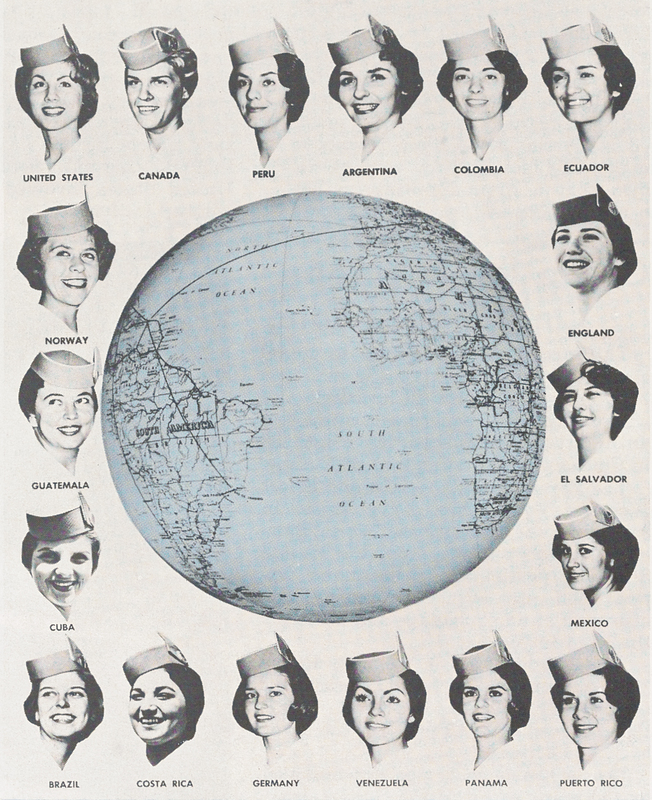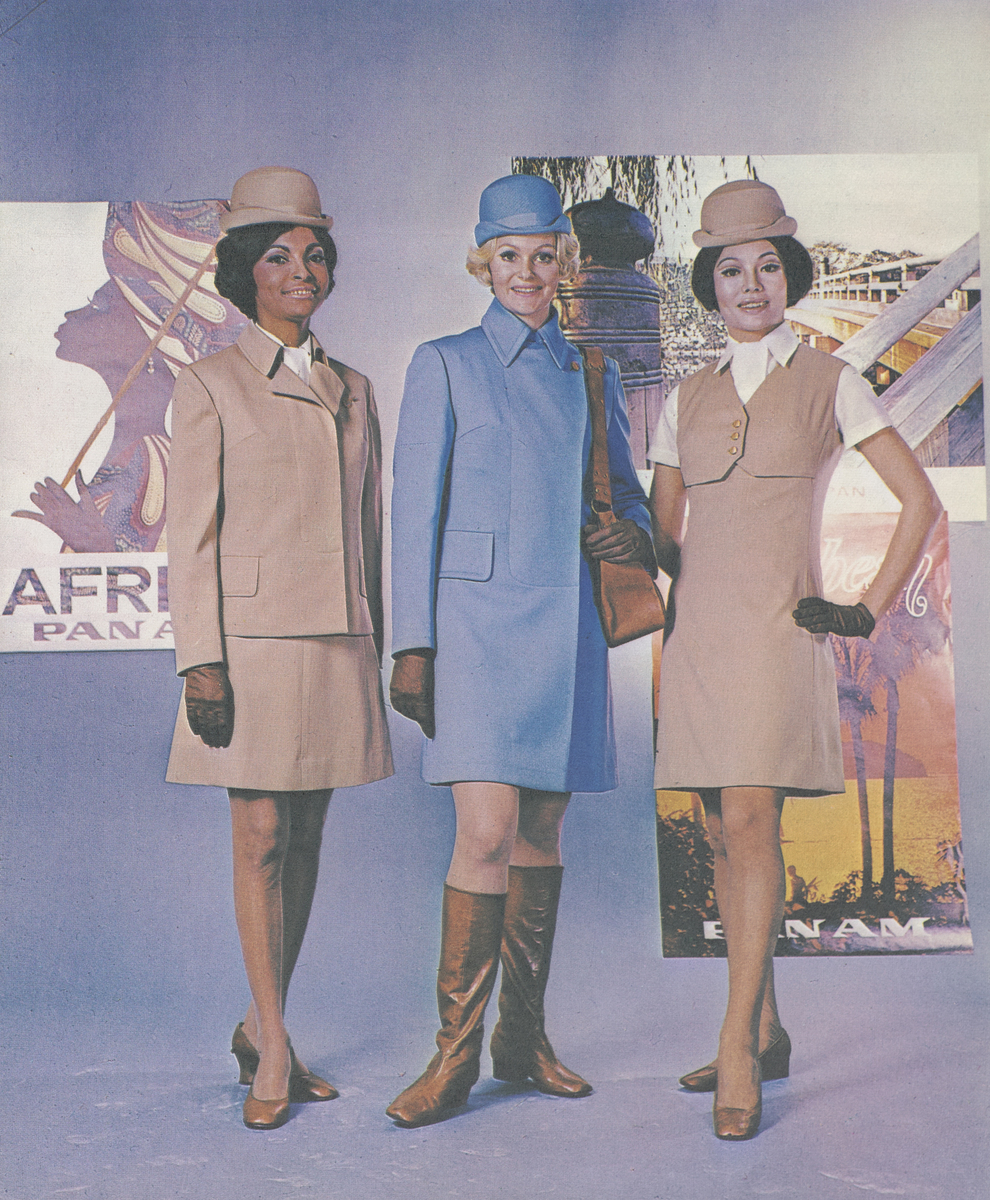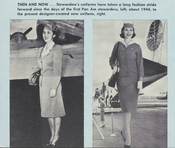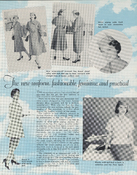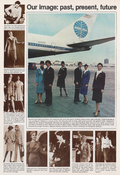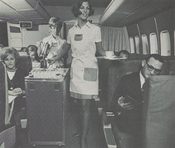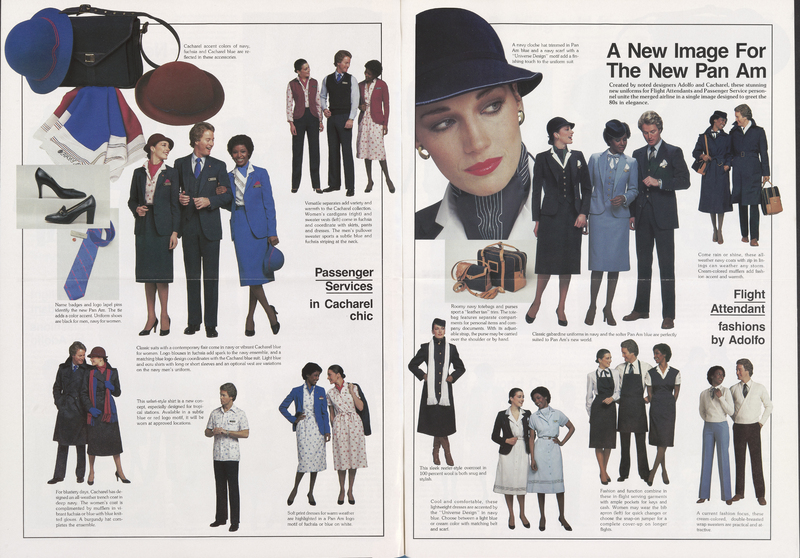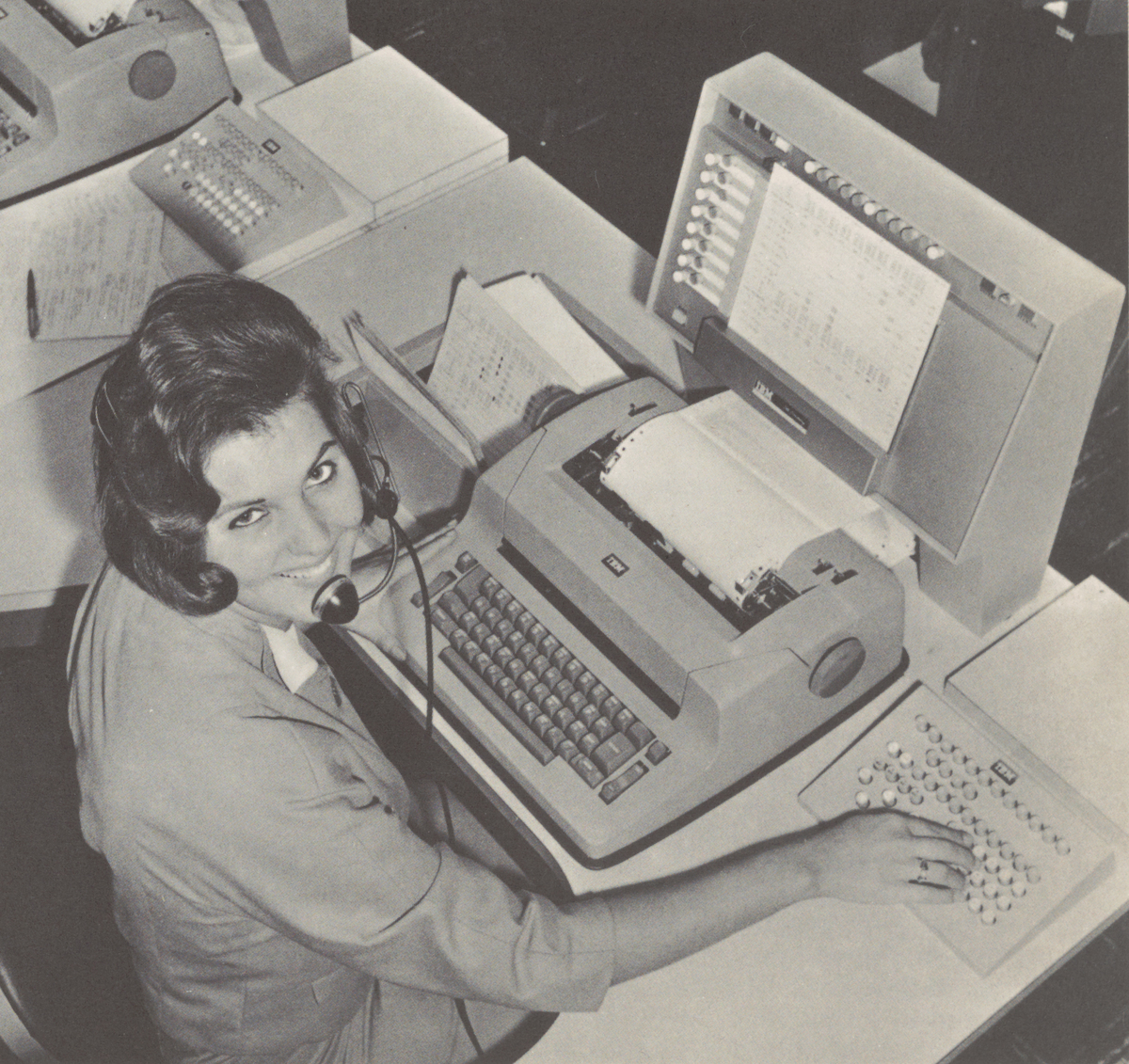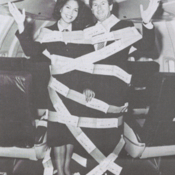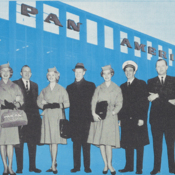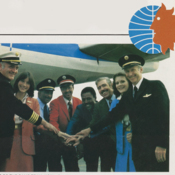Welcome Aboard
Welcome Aboard! A Look at Service in the Stratosphere
Glamour and luxury were once synonymous with air travel, culminating in the Golden Age of flying during the 1950's and the 1960's. Because ticket fares were once regulated, airlines competed for passengers by upping their amenities. Not to be outdone, Pan American Airways constantly strove to be a cut above the rest, and their style, food, and service was truly legendary.
Climb aboard, as we take a tour of Pan Am's superior services through the years.
Soaring Standards
In the early days of commercial air travel, Pan Am's flight attendants were all male and were known as stewards, who wore white coats and hats. Due to the limited range of early aircraft, planes made several stops en route to their destinations and passengers were often fed on the ground during refueling and maintenance. Flights were notoriously bumpy and tended to make passengers queasy, so meals were kept simple and usually consisted of cold box lunches.
Service evolved rapidly in the mid-1930's when the Sikorsky S-42 joined Pan Am's fleet because its galley had equipment that enabled food to be heated aboard for the first time. Still, international flights could take up to five days and required overnight stops. In order to impress passengers during such long journeys, stewards learned where to find the best local fare at each stop and had it delivered to the dock by the next day prior to takeoff. With no refrigeration, food was kept on ice. Meals were served in multiple courses with real glasses, silverware, fine china, and linens.
As aircraft and technology progressed, so too did the Clipper kitchens. The Lockheed Constellation galleys had two electric convection ovens that could produce 12 hot meals in 15 minutes. By 1958, the galleys aboard the DC-8 and Boeing 707 jets were equipped with infrared ovens with quartz panels, allowing crews to cook steaks in minutes. The wide bodies of the Boeing 747's were so big, they even allowed for buffet service. Menus were often extensive and varied from route to route and were highly collectible among passengers.
High Class Convenience
Pan Am employed a number of accommodations and services to cater to its diverse clientele and impart a sense of comfort and luxury. Passengers were allocated ample space aboard the plush aircraft interiors. The Constellations and Stratocruisers included roomy sleeping berths, reclining seats, and a children's play area. Pan Am's "President Special" even provided orchids and perfume for female passengers and cigars for male passengers
In 1944, the airline introduced Clipper Air Cheques, a type of travelers' check developed in cooperation with American Express, and presented the first book to Eleanor Roosevelt. As in-flight entertainment evolved, Pan Am also introducted "Theatre-in-the-Air" in 1965, showing feature films and provided headsets for movies and music.
Palatial Provisions
Fine dining became a cornerstone of Pan Am's in-flight services, and it relied heavily on restaurant-like food service to impart a sense of luxury. The company established commissary operations in San Francisco, New York, London, and Paris where it paired with Maxim's to incorporate high-class cuisine. Aboard Pan Am's Stratocruiser, passengers were treated to a seven course dinner and could enjoy cocktails in the lower lounge. The airline was known for its fresh roast beef, carved to order on board the aircraft.
In 1946, Pan Am introduced pre-cooked frozen meals that could be kept cold aloft until service. Meals were par-cooked in Pan Am's central kitchens, flash-frozen and distributed among its aircraft. In later years, the airline began incorporating dishes indigenous to its routes, such as Beef Negimayaki on the Tokyo route. Pan Am won multiple awards for its excellent culinary service.
Pan Am Pride
Pan Am initiated its first class of female flight attendants in 1944. Male stewards were needed on the warfront and the stewardesses, as they were known, stepped in to take the place of their male counterparts. From that point on, the role of flight attendant was predominantly occupied by women for years to come.
The "Pan Am Smile" was worn with pride. Since flight attendants were the primary point of contact for its clientele, Pan Am placed a strong emphasis on appearance and imposed strict qualifications. The image of the Pan Am flight attendant embodied the allure and excitement of air travel and inspired many people to pursue careers in aviation.
Although Pan Am flight attendants have often been portrayed as glamorous, nurturing caretakers, this image does not convey the elaborate training, strict physical requirements, and rigorous demands expected of them. All personnel underwent Orientation and flight attendants were required to memorize their Flight Service Manuals, consisting of hundreds of pages.
After 5-6 weeks of arduous training, students earned their "wings" and attended a graduation ceremony. Many flight attendants forged lifelong friendships and organized World Wings International, a philanthropic organization for former Pan Am flight attendants.
Wings All Over the World
With air routes spanning the globe, Pan Am hired flight attendants from all over the world. In its Latin American Division alone, over 23 nationalities were represented and the flight attendants spoke over a dozen languages, as well as sign language.
Good language skills were a critical element for good customer service since Pan Am served a diverse international customer base. In addition to English, Pan Am required flight attendants to speak at least one other language fluently. These language skills were invaluable for communication with a wide array of passengers that included celebrities, dignitaries, infantry, and average citizens.
Service in Style
From Pan Am’s earliest days, flight crew uniforms were designed to promote the airline’s image of professionalism and world class service. The first pilots' uniforms were all navy blue with white hats in the same style as staff of an ocean liner, a tip of the hat to Juan Trippe's experience in the U.S. Navy. Stewards wore white button-down butler's coats with white hats.
Pan Am’s flight attendants were known for their fashion-forward uniforms, many of which were designed by world-renown designers. Pan Am allowed the first group of seven stewardesses to choose the color of their uniforms. Elizabeth Tunis, Pan Am's first purser (head flight attendant), chose "heavenly blue" which subsequently became known as "Tunis Blue" in her honor.
As commercial air travel grew and airlines competed for passengers, new uniforms were rolled out to showcase Pan Am's classy style and to benchmark new milestones in aviation. High-fashion couturier, Don Loper of Beverly Hills designed Pan Am's new uniforms for 1958, introducing "The Jet Age Look". In 1969, Evan-Piccone designed a new line of attire to commemorate Pan Am's newest aircraft. Known as "The 747 Look", the uniforms were offered in "Superjet Blue" and "Galaxy Gold".
To commemorate the merger of Pan American Airways with National Airlines in 1980, a new line of attire was designed by Adolfo and Cacharel for all flight attendants and passenger service personnel. Prior to their merger, National Airlines had followed similar trends in flight crew fashion.
Selling the Skies
Pan Am also relied on its skilled sales personnel on the ground to keep its flight crews up in the air. As sales increased and technology evolved, Pan Am introduced the Panamac computerized reservations system in 1964, connecting hundreds of agents throughout the world with Pan Am's central system in New York City.
The airline often employed a variety of promotional tactics over the years to boost its sales, such as commemorative and anniversary flights and promotions for new services. Pan Am also owed much of its success to its savvy marketing campaigns, and their advertisements and associated artwork remain highly collectible to this today.
This exhibit written and curated by Gabriella Williams, August 2018. Last updated November 2021.
References
1. Lovegrove, K. Airline: style at 30,000 feet. Hong Kong: Lawrence King Publishing, Ltd., 2013.
2. Barry, K. Femininity in flight: a history of flight attendants. Durham: Duke University Press, 2007.
3. Trautman, J. Pan American Clippers: the golden age of flying boats. Erin, Ont: Boston Mills Press, 2007.
4. Wing Tips, Special Issue, Feb. 1969.
5. Pan American World Airways, Inc. (1963: Aug.) "Stewardesses on LAD routes represent 23 nations", Sales Clipper, Vol. 21(8), p. 4.
6. Pan American World Airways, Inc. (n.d.) You are...Pan American World Airways.
7. Pan American World Airways, Inc. (1958) Aviation's one world in the Jet Age.
8. Pan American World Airways, Inc. (1963) Horizons Unlimited: an indoctrination course for flight service personnel.
9. Pan American World Airways, Inc. (1952) It's a Pan American World.
10. Pan American World Airways, Inc. (1986: July) "The early pursers - chief cooks, bottlewashers and inflight typists", Pan Am Clipper, Vol. 12(4), p. 9.
11. Gagliano, R. (2010) "A history of in-flight food". Retrieved from: https://www.marketplace.org/2010/05/19/business/history-flight-food
12. National Museum of American History (2018) "Terminal interchange from PANAMAC Airlines Reservation System".
Retrieved from: http://americanhistory.si.edu/collections/search/object/nmah_334772
13. Avakian, T. (2017: Jun. 16) "Get to know the fascinating history of airline food", Travel and Leisure.
Retrieved from: https://www.travelandleisure.com/airlines-airports/old-airline-meals
14. Smith, O. (2017: Jun. 10) "Why does plane food taste so bad?", The Telegraph.
Retrieved from: https://www.telegraph.co.uk/travel/comment/why-does-plane-food-taste-so-bad/
15. Muther, C. (2014: Sep. 6) "What happened to the glamour of air travel?", Boston Globe. Retrieved
from: https://www.bostonglobe.com/lifestyle/travel/2014/09/06/what-happened-glamour-air-travel/D2tH33b60WzmIkKPmUQMBP/story.html
16. Unnikrishnan, M. (2015: Jun. 4) "A law that changed the airline industry beyond recognition (1978)", Aviation Week Network Archives.
Retrieved from: http://aviationweek.com/blog/law-changed-airline-industry-beyond-recognition-1978

